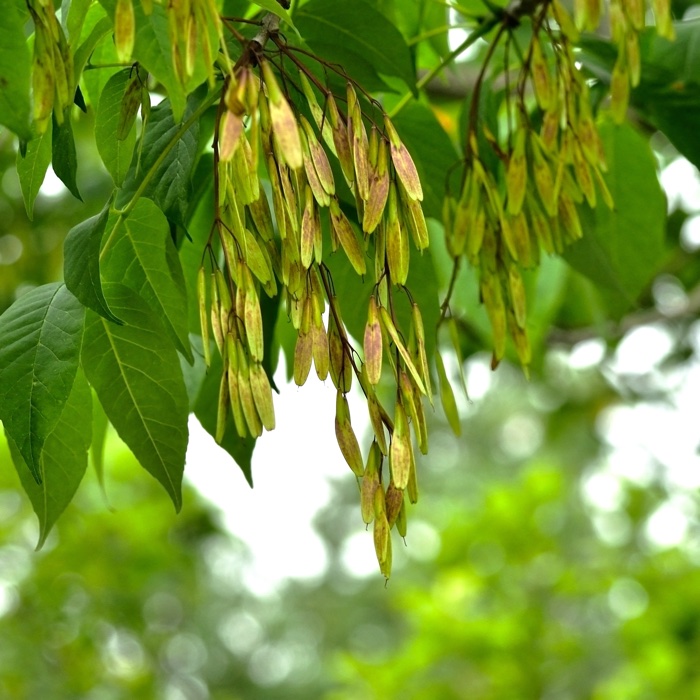Botanical collection

Greater ash
Common name: Greater ash
Latin name: Fraxinus excelsior
Family: Oleaceae
Origin: Europe, Turkey and Caucasus
Features:
The genus, Fraxinus, has uncertain origins and according to some authors comes from the Greek frasso ‘defend’, ‘assiepo’, while the species, excelsior , refers to the impressiveness of this tree that can reach 40 metres in height. Large deciduous tree, slender and majestic in isolated specimens. The trunk, which can exceed a metre in diameter, is straight and cylindrical, with the bark initially smooth, greenish-grey colour and light spots, tending to assume grey-brownish tones and longitudinal cracks with age. The branches are smooth, pale greenish colour and opposite to each other on the trunk. The buds are very evident, hairy, opposite each other and black; the bud at the apex of the branches is larger than the others. The leaves are composite and very large, even more than 25 centimetres, opposite, impipinate, with 7-15 lanceolate leaflets, with acute apex, finely serrated foliar margin, with intense green colour in the top and lighter on the bottom. At the beginning of spring, on the branches still without leaves, flowers gathered in axillary panicles appear. The fruits are samaras, up to 6 cm long, pedunculate and gathered in clusters. Initially they have a light green colour then, after ripening, they become yellowish and finally reddish remaining attached to the branches throughout the winter.
Curiosity: the wood was once used to manufacture skis.
Selection for the park: low deck plant; trunk circumference 30-35 cm; height 6-7 metres.
Botanical information powered by AG&P
See on the map


